Michelle Taylor – Advocacy Journey
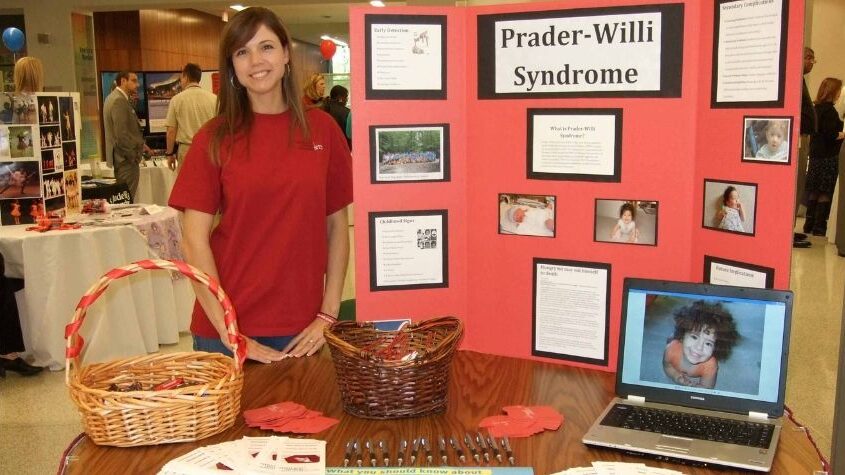
My name is Michelle Taylor, and I am the proud mom to a 13-year-old girl with Prader-Willi syndrome, Addison. My journey with Addison began three years prior to finding out I was pregnant with her. My husband, Curtis, and I had a 4-year-old son, Darryn, and were working on strengthening our family unit after a couple of turbulent years in our marriage. Despite my focus on improving my family unit, being a present and involved mom to Darryn, and pursuing a work-home life balance (which I always struggled with), I vividly remember the intense longing for another child. I prayed for three years, wondering the entire time why the Lord would allow such an intense longing for another child if he was not going to fulfill that longing. After the confusion and anger subsided, I prayed that the Lord would give me clarity. At that point, I understood that maybe I was misinterpreting the longing for another child with something else. I flew my white flag of surrender and gave it to the Lord completely. Two weeks later, I found out I was pregnant with Addison.
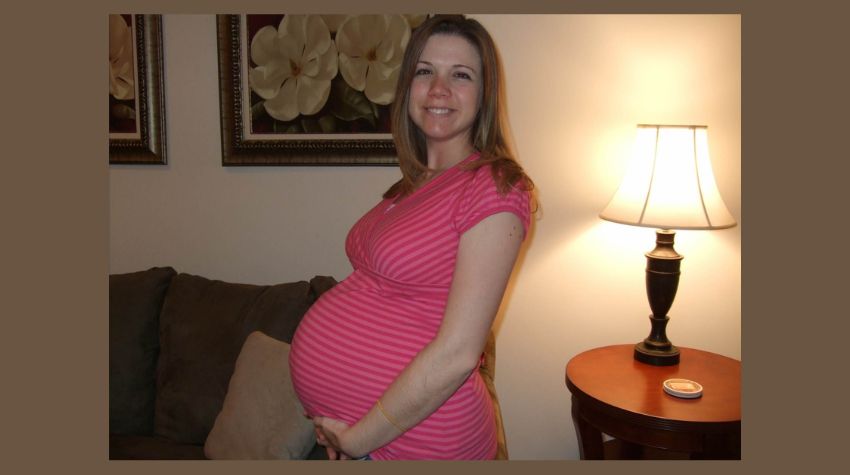
During my pregnancy, one of the many blood tests came back as high risk. I can’t recall what the high risk was for, and, quite honestly, I can’t say I cared. The Lord had fulfilled a longing, and I was focused on being grateful for the life growing inside of me. As my OBGYN instructed, I went to a specialist where, during my first 3D ultrasound, I was offered an abortion. Looking at the baby, I so longed for on the screen, I was adamant that the Lord gifted us this baby, and no matter what the situation, termination was not an option. At that same appointment, we were so excited to learn we were having a girl and agreed on the name Addison.
Because I was considered a high-risk pregnancy, I had a scheduled c-section. Having a baby previously where I insisted on shaving my legs while in full-blown labor, I welcomed the idea of a scheduled delivery. We made all our arrangements and enthusiastically showed up at the hospital. A few hours after the induction process started, the nurse explained that the baby’s heartbeat was slowing and needed to be monitored. The nurse was not alarmed, so neither was I. As I patiently waited for the next step in the induction process, I dozed off. Suddenly, the nurse woke me, and while being wheeled out of my room, she explained the baby’s heartbeat had slowed to a critical point, and we were on our way to the OR. The blessing is that it all happened so fast that I didn’t have time to fully process what was happening. Once in the OR, the nurse started hooking me up to an IV bag, which I didn’t know until later was the anesthesia needed to force me asleep more quickly. As the on-call doctor was approaching the bed, he said, “Get her under now.” As I spotted the scalpel in his hand, the anesthesia forced me asleep.
In the coming out of the anesthesia-dazed haze, it seemed eerily quiet in the room, no hustle and bustle, no baby crying, just the soft rustle of the nurse’s movements. I asked the nurse standing closest to me how my baby was. She responded, “Let’s take care of you, Mom.” Before I had a chance to ask more questions, the lingering anesthesia forced me back asleep. The next time I woke, I was in a state of panic and began frantically looking around the room for my baby. As I looked over my left shoulder, I saw my mom holding this beautiful baby in a pink crochet hat. I will never forget the sense of relief I felt at that moment. I consciously thought to myself, no matter what obstacles we may face, I welcome them because my baby is okay; she is alive.
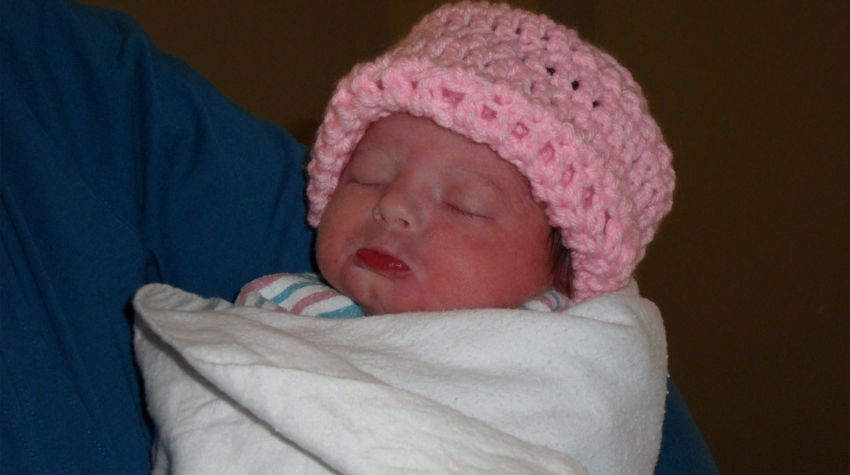
A couple of days later, Addison had a blood test for Down Syndrome. The pediatrician let us know we would be hearing from him in a few days with the results. We were released from the hospital and went home to begin our lives as a family of four.
As promised, a couple of days later, the pediatrician’s office called. They informed us of the negative test results. We breathed a sigh of relief. No other outcome was presented as a possibility, so if Addison did not have Down Syndrome, in our minds, she did not have any diagnosis.
After getting settled in at home, I noticed that my baby slept twenty-three hours out of the day. She did not cry to be fed or when she was wet. She did not make any noise at all. Even during her one waking hour, she would quietly look around the room, making no noise or moving at all. Having been a mom before, I knew that babies slept a lot, but I also knew that even the most content baby cries occasionally. I vividly remember trying to force-feed Addison. Stripping her down, thumping the bottom of the bottle, trying every trick the internet offered. Nothing worked. I woke every hour on the hour around the clock to try to force-feed my baby, which took an hour. I would leave my hand on Addison’s chest for hours at a time just to feel her heartbeat. That was the only way I knew there was life in my baby. I was becoming zombie-like. I knew Addison’s two-week follow-up appointment was coming up, so I patiently waited to get some answers for her sake and mine.
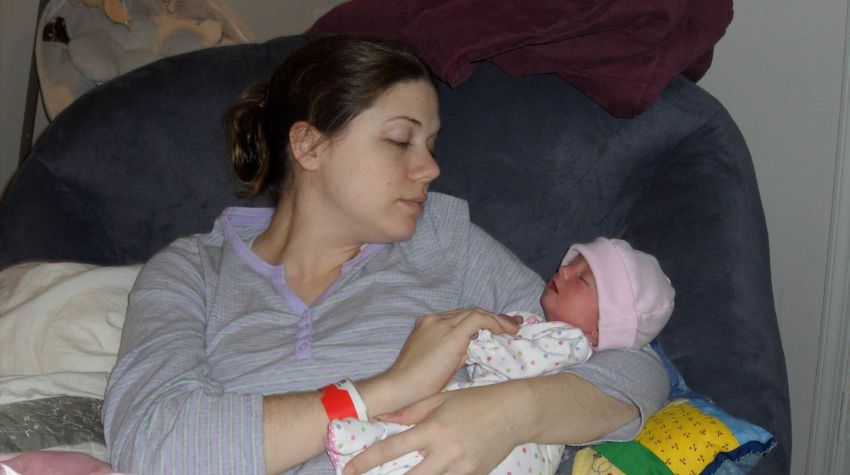
At the appointment, the pediatrician informed me that Addison was declining in health. This was not a surprise to me, considering how difficult it was to get her to eat. He suggested I make an appointment with the genetics department at Children’s National Hospital in Washington, DC, but warned there would be at least a three-month wait. I called the second we walked out of the office and, just by the grace of God, was there an opening for noon the next day.
At the appointment, the geneticist, Dr. Zand, was holding Addison and asked me what life was like in those first couple of weeks. I explained everything, focusing on Addison’s excessive sleeping, lack of movement and crying, and the difficulty feeding her. Within five minutes of our visit, Dr. Zand explained that Addison was failing to thrive or content to starve, which were clear indicators of a rare syndrome called Prader-Willi syndrome. We were so confused. What in the world was Prader-Willi syndrome, and what did it mean for Addison? Dr. Zand warned us not to look for answers on the unfiltered internet. If the genetic testing came back positive, she would provide more insight, but until then, she wanted me to focus on being Addison’s mom and not the around-the-clock nurse I had become. After a long day of waiting, a NICU room became available at midnight, and we were checked in for our stay.
Well, our curiosity got the best of us, and we did the one thing Dr. Zand told us not to. Using the computer in Addison’s NICU room, we Google searched Prader-Willi syndrome. What we read unlocked a terror I didn’t even know existed. We found no hope in what we read, only hard facts and the terrible lifelong implications. As we read, we thought this could not be possible for our daughter, right? The Lord would not do this to her or us, right? We are good people who love Him. He would not do this to us, RIGHT? One of the facts we read was that only 1 in 25,000 live births are diagnosed with Prader-Willi syndrome. We asked ourselves, “what are the odds”? After all, it was only Dr. Zand’s clinical diagnosis. She is human and could have gotten it wrong.
During our week-long stay in the NICU, approximately 30 tests were run. All but one of the genetic tests came back negative; the test for Prader-Willi syndrome. Addison was having more awake time, and feedings became a bit easier, so we were optimistic that maybe she had congenital hypotonia (low muscle tone), and there was no other diagnosis. We once again contemplated what the odds were that the only test still outstanding would be positive. The test for the syndrome that only affects 1 in 25,000 live births. Our lingering questions evolved into statements. It’s not possible. The Lord would not do this to us. We are good people who love Him. He would not do this to us.
We were released from the NICU and went home to continue our lives as a family of four. As the weeks passed, Addison was steadily improving. This was a super encouraging time for us and further supported the theory that our baby was just fine. We had a scare, nothing more.
One dreary afternoon in May 2010, I was in the store purchasing baby formula when my phone rang. It was Dr. Zand calling with the results of the only outstanding test, the test for Prader-Willi syndrome. I answered the call confident that she was going to tell me the test results were negative. I froze in an instantaneous paralyzing fear when the first thing she asked me was, “Are you driving?” Once I confirmed I was not driving Dr. Zand proceeded by telling me that the test for Prader-Willi syndrome came back positive. I was in shock, and with my heart pounding to the point that it was physically painful, Dr. Zand reminded me that the diagnosis did not change my baby; it only provided us with answers and clarity on how to move forward. We made a follow-up appointment and ended the call. Still in shock and frozen in place, I called Curtis. It was a quick call that ended with him telling me he was on his way to meet me. He did not want me driving, unsure of when the shock would wear off and the weighted reality of what I had just learned would sink in.
When I got home, my parents were there. I handed Addison to my mom and went to my bedroom. I lay in my bed crying in devastation and grief, unsure of what to do next. The question of how I can be the mom this little girl is going to need for the rest of her life was circling in my head. Twenty-four hours later, I got up, washed my face, and began praying. Looking back, I am so grateful I was afforded those twenty-four hours to grieve in that way. Without it, I am not sure I would have received the clarity I needed so soon after the diagnosis. Don’t get me wrong, I have grieved in different ways since that day, but that very isolated, physical response to grief was necessary for me to be able to get up and move so quickly after receiving life-altering news.
Not long afterward, I recognized why the Lord gave me the intense longing for a baby. I believe he was conditioning my heart over that three-year period for this journey. He gave me a renewed sense of purpose and, within that, the strength to advocate and fight for Addison. This is where my advocacy journey began.
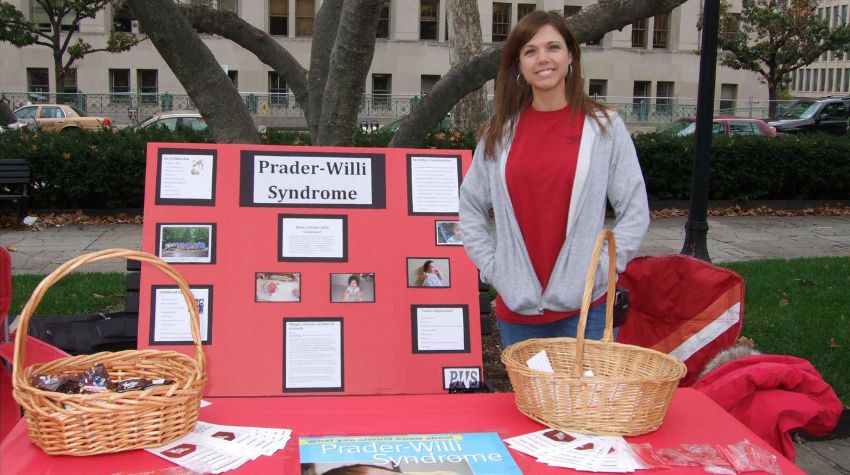
I started by searching for a support group. I quickly learned that the support group avenue wasn’t right for me. I found that unhappy, discontented people are more likely to share their feelings and search for others feeling the same way. I also found when people tried to provide a positive outlook and give insight on things that worked for them; the response was often even more negative than the original post. That’s not to say all of the support group members were that way, but in my experience, far more of them were than not. I am a realist, and I acknowledge the difficulties, but I thrive on a positive outlook, so that was counter-productive for me. I didn’t know it at that time, but the one critical thing I got during my short stint in the support group was the name of Dr. Miller.
A couple of years after my departure from the group, I made an appointment to see Dr. Miller. After that first appointment, I knew she would be a part of our lives forever. She is an expert in Prader-Willi syndrome and has tracked Addison’s development since that first appointment in 2012. Dr. Miller gave us hope and although she was realistic about the diagnosis, she focused on all the things Addison could do instead of all the things she couldn’t. The Lord can use an avenue you think is a dead end to give you something you need, whether you realize it at that time or not.
After the support group proved unsuccessful, I immediately began looking into the benefits the state of Maryland could provide for Addison. A friend from church worked for the Department of Health and suggested I try to get services through them. Sure enough, I was able to get physical therapy, occupational therapy, and speech therapy for Addison. The program was called “Infants and Toddlers” and it was fairly easy to get those free services through the state. I didn’t even realize those therapies could be beneficial for an infant, but I learned later on just how beneficial they are in early development. The sooner you start, the better the long-term outcome. I was feeling good about my success in acquiring those services, so I began searching for additional state-provided services. My extended maternity leave was quickly coming to an end, so the need for additional services was becoming urgent. I didn’t want to quit my job and lose that income for my family, but I knew we were going to need specialized care for Addison. Being in a typical daycare environment was not going to work long-term. I quickly learned that Maryland qualified individuals for most services based on the combined household income. I was fine with that until I realized the qualifying income was unrealistically low, even for a single person living alone. Needless-to-say, our combined income was over the maximum.
I widened my search to include our neighboring state of Virginia, which was only 45 minutes from our home in Maryland. I searched the Department of Medical Services (DMAS) website and learned the state of Virginia uses the receiving party’s total income to qualify them for services. That meant that Addison’s total income, which was $0, would be used. Curtis and I made the decision to start working towards selling our home and moving to Virginia. Fortunately, our son’s daycare provider at that time agreed to provide the focused care required for Addison until we were able to move.
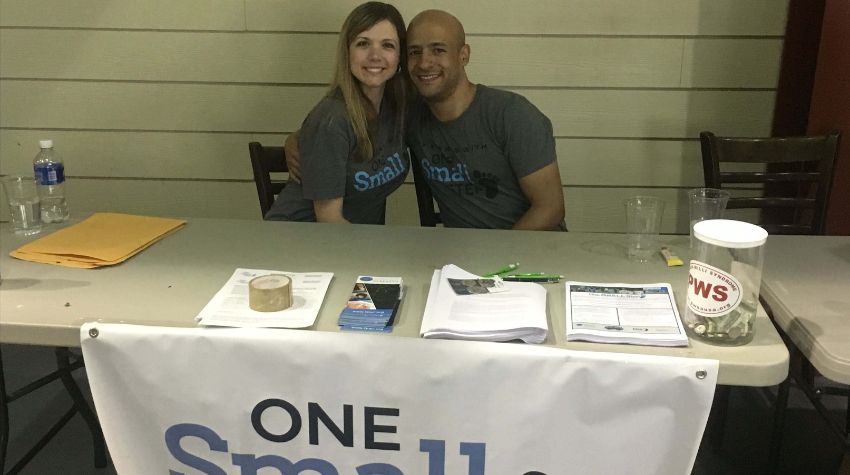
I decided I was not going to wait around and do nothing to advocate for Addison and the Prader-Willi syndrome community while we waited to sell our home and move. I began reaching out to friends, family, and church members, asking if I could speak at their organization about Prader-Willi syndrome. That proved very successful. I manned an informational booth at a few employment fairs and spoke at a few lunch-and-learn events. There were many late nights printing informational handouts and packaging giveaways I purchased through the Prader-Willi Syndrome Association. I vividly remember the sense of fulfillment I had after each event. Even when people would say nasty and unkind things because they didn’t understand, I was still fulfilled knowing that maybe, just maybe, a seed of understanding and compassion was planted. I was doing all of this for a purpose much greater than myself. I was advocating for my girl.
I also spoke to my own organization’s leadership, which I didn’t know at the time would become another avenue of advocacy and fundraising years later.
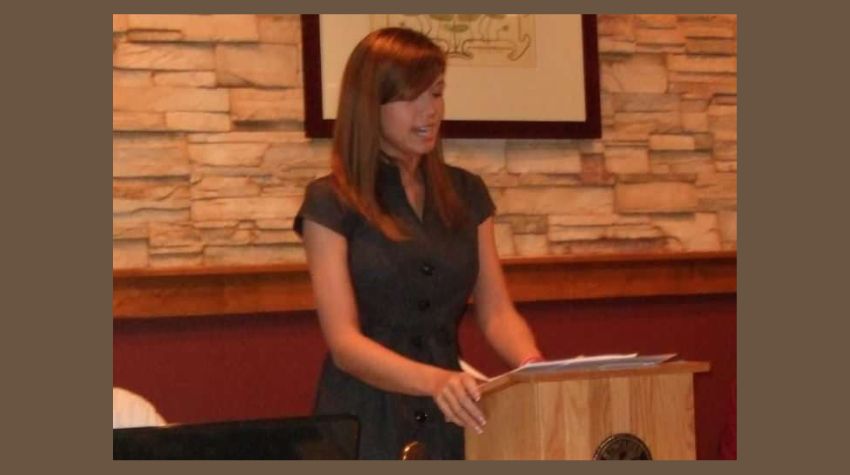
As soon as we were settled in our new home, I began the process of getting Addison services. Working through DMAS I was set up with a representative. The waiver that would most benefit Addison was called the Elderly and Disabled Consumer Directed Waiver (now called CCC+) offered through Medicaid. The process of getting Addison approved was a lengthy one that challenged my determination. Although the waiver is meant for disabled individuals, it is most commonly used for the elderly. It was an uphill battle with tons of paperwork, copies of medical records, meetings (sometimes contentious), and phone calls. I grew weary at times and had to remind myself this was worth it, that Addison was worth it. If we didn’t fight for her, who would? We breathed a sigh of relief when we were finally approved for the waiver.
The primary benefit of the waiver is it provides an aide to care for Addison at no cost to us. Through the waiver, you can either have an aide assigned to you through an agency or you can select an individual you know. Over the years, we have had agency-directed aides, as well as friends/family as aides. The waiver also provides respite hours that are outside of the approved weekly aide hours. Being a caregiver can be challenging, and burnout is a real thing. The respite hours are a necessity for Curtis and I to have time away together. The strength of our family is founded on the strength of our marriage. Another great benefit of the waiver is that it places Addison on waitlists for other extremely beneficial waivers she may need as she ages.
In addition to the CCC+ waiver, the DMAS rep also helped us get Addison registered for a special-needs preschool to prepare her for an inclusive kindergarten. The preschool is where we learned about and established Addison’s first Individual Education Plan (IEP). The IEP has proven to be a critical part of advocating for Addison through the years. The IEP is a legally binding document, and it is critical that parents are aware of their rights. It is unfortunate, but I have threatened legal action against the school system when the IEP was not upheld, and it put Addison in physical danger. The point is not for educators to become experts on your child’s diagnosis but that they follow every documented requirement within the IEP. Being an educator is one of the most challenging professions, and I have great respect for anyone who chooses that occupation. However, that does not eliminate the responsibility to keep each child safe during the school day, including those with special needs. Of the several IEP meetings we have had over the years, a handful of them have been contentious. It typically stems from an educator not adhering to a condition of the IEP. If I had one recommendation based on my own experience, it would be that parents make the IEP as detailed as possible. Cover both academic goals as well as accommodations to ensure your child’s safety. You may feel like you are asking for too much, and the meetings can become very lengthy, but it is all worth it in the end. No ask is too big to protect your child.
Remember when I mentioned that I spoke to my organization’s leadership about Addison and Prader-Willi syndrome? Well, a few years after that, I asked them if they would be willing to sponsor a fundraising event called One Small Step for Prader-Willi syndrome. They immediately agreed. I had no idea at that time it would become a large, annual event held at the local minor league baseball stadium. We raised thousands of dollars, and I was able to advocate to the public attending the games. We even had articles published in the local paper about Addison, Prader-Willi, and the fundraising event.
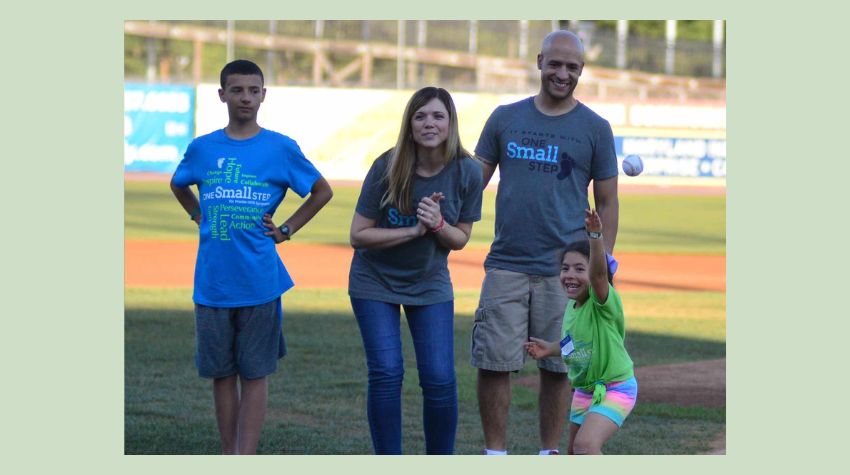
All the advocacy opportunities stemmed from my simply asking. Was I nervous? Yes! Was I concerned people would look at me differently? Yes! Was I worried talking about being a special-needs parent would impact my career? Yes! Was I worried about rude comments from people who didn’t understand Prader-Willi syndrome? Yes! I had more concerns and worries than I can count, but I also knew if I didn’t advocate for Addison, I would not fulfill the promise I made to God and to Addison. That conscious thought I had the day Addison was born that no matter what obstacles we may face, I welcome them because my sweet baby is ok; she is alive. There is power in knowing you are fulfilling a God-given purpose. Overcoming the fear, concerns, and worries with action is unlike any other feeling. When Darryn was in boot camp, I would write to him, “The most challenging things in life are the most rewarding.” That was my encouragement to him to keep going, keep fighting, don’t give up because it will all be worth it. It was also a reminder to myself.
The journey of education and advocacy is a life-long journey that will change and evolve over time. Right now, we are focusing on teaching Addison to advocate for herself. But, as we all know, children learn the most from watching the example their parents set for them.
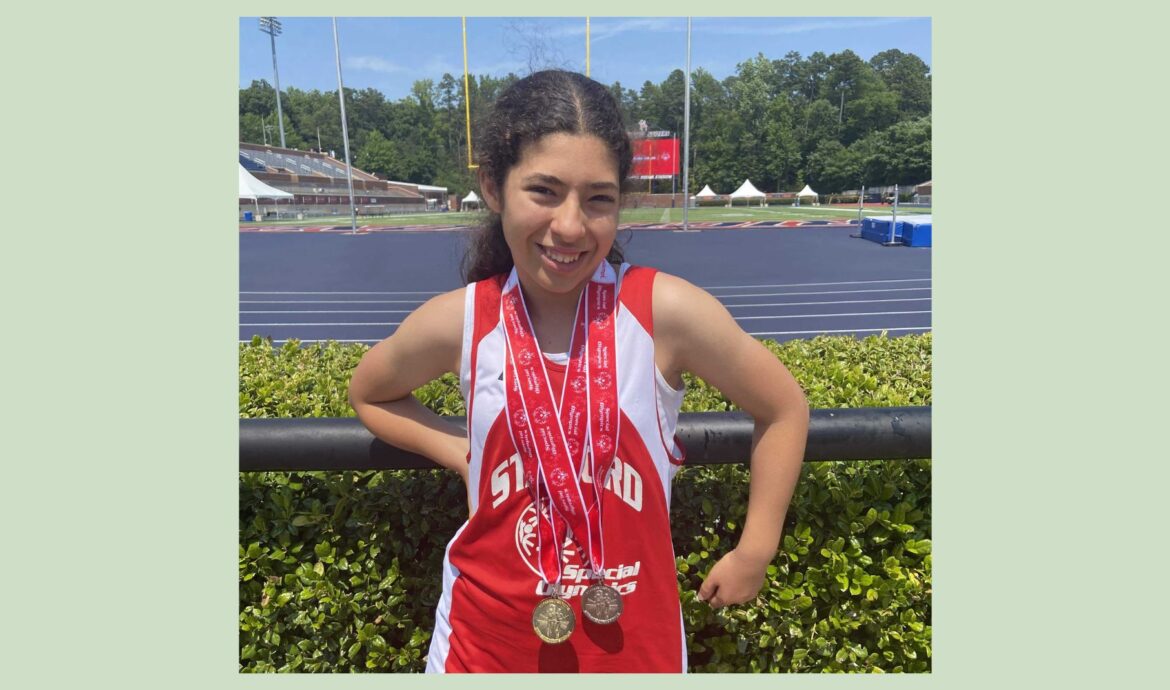


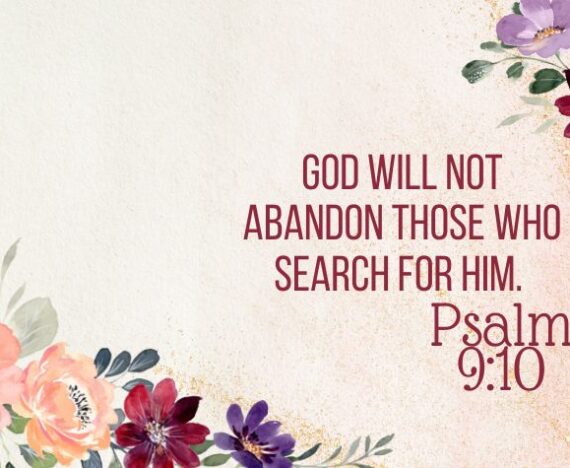


Comments
Kris
We were pastoring at the church Curtis’s parents went to when your daughter was born. It was great to read all the background of your journey and the work you have done. Your daughter is beautiful. We prayed much for her when she was little. Now we would love to hear the progress going forward. God has his plan and He will see us through that plan. Our grandson has had a medical journey as well. It’s so rare it doesn’t have a simple name. We just call it a chromosomal abnormality. I’ll be sending your story to her. Thank you for sharing it.
God bless your family
Desiree Taylor
Hi Kris! Thank you for sharing! We are praying for your grandson.